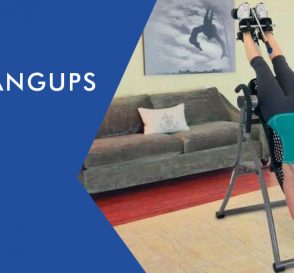With most of us working in front of a computer, prolonged sitting has become an expected job requirement.
We spend several uninterrupted hours glancing at a screen, allowing us to ignore our surroundings as well as our own bodies.
Work obligations are more efficient, but the wear-and-tear on our spines is silently present as we sit slumped at our desks.
Before long, the silence transforms into raging back pain.
In this article, I discuss what are the possible causes of your back pain and what you can do to treat/prevent it.
How long should you sit for?

According to the British Journal Of Sports Medicine, the latest research reveals that people really need to revamp their thinking when it comes to the norms of sitting.
An office worker sits for an average of 10 hours per day, which is only a portion of the sitting they do at home in front of the television once clock-out from work.
Medical experts are saying that individuals should be standing for at least 2 hours out of an 8-hour working period.
Lower back pain:

Lower back pain encompasses the lower portion of the spine below the ribs and above the hips and the tailbone. Pain can radiate through the spine and the surrounding muscle tissues due to any number of causes.
Depending on the cause, lower back pain can be either cured or can last a lifetime.
Symptoms of lower back pain
- Dull aching pain: persistent pain that possibly is accompanied by muscle spasms and irritation throughout the lower spine and hips.
- Pain in buttocks, legs, & feet: Since there are numerous nerves that run through the spine and the back, lower back pain can cause pain throughout the entire lower body (i.e. sciatica).
- Increased pain with sitting: Lower back pain oftentimes worsens with prolonged sitting.
- Pain relief with movement: On the other hand, lower back pain can be temporarily or completely alleviated with mobility such as standing, stretching, or walking.
Most likely causes of lower back pain
As mentioned previously, there is more than one cause of lower back pain aside from sitting far too long at work. However, many reasons can be explained by our lifestyle choices and routines:
Prolonged sitting
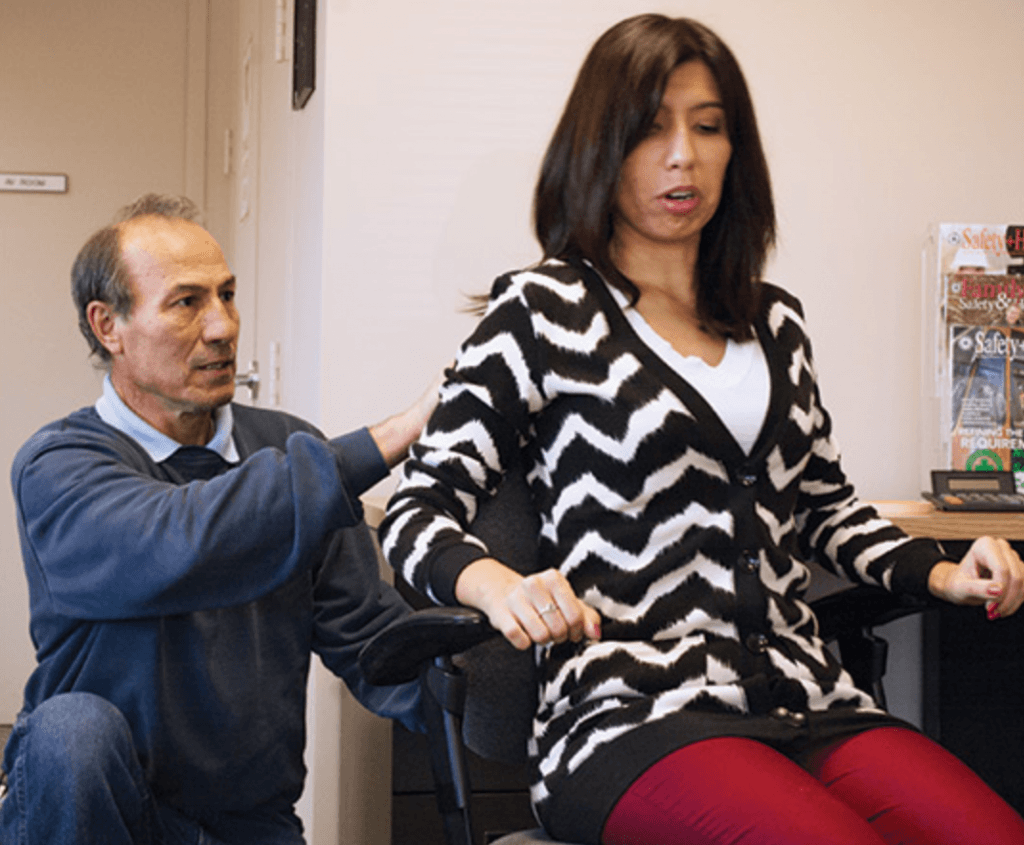
If we are just talking about sitting separate from the overall posture of the spine, prolonged sitting can contribute to lower back pain solely because of all of the pressure placed through the lumbar discs and vertebrae.
The pressure and lack of movement through the spine can cause nerve impingements that can cause muscle pain, reduced muscle contractions, and loss of sensation throughout the lower body.
Slouching
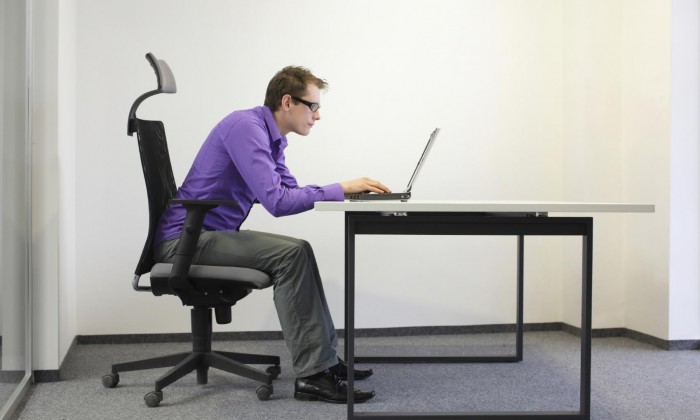
Slouching or hunching over at a computer screen is unbelievably dangerous to your spine because the damage happens slowly over a lengthy period of time.
Consequences of slouching
Slouching forces the spine into a C-shape instead of supporting its natural S-shape. As a result, increased pressure is placed on the lumbar (lower portion of the spine) discs.
This pressure can irritate and even break down the discs over time as well as cause nerve impingements and spinal herniation in which the discs physically bulge out from the spine.
Lack of stretching
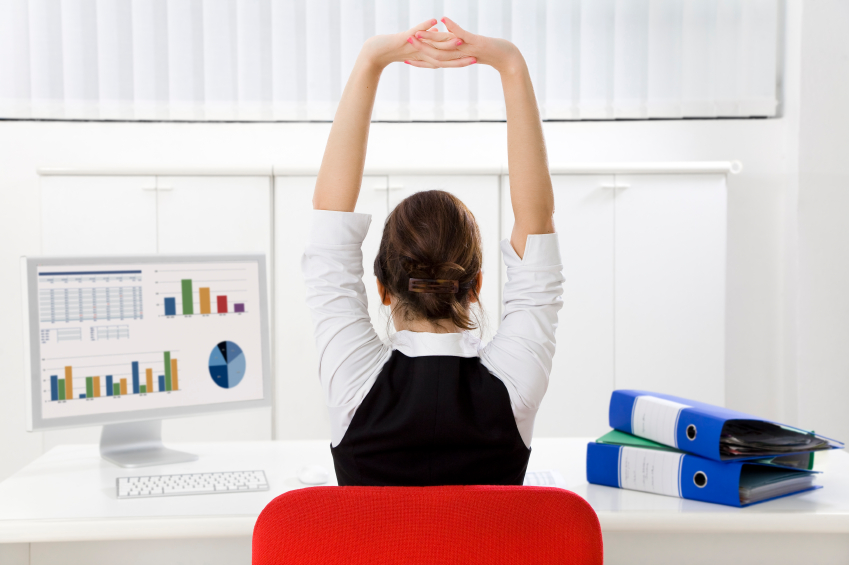
Due to full-time hours spent in an office setting, many working individuals have very little time (and little motivation after a long day) to stretch.
But just simply stretching for a few minutes per day can increase spine and muscle health.
When we don’t stretch regularly, we reduce regular blood flow throughout our muscle tissue.
Our joints, tendons, and ligaments holding our skeletal structure together freeze which further decreases our mobility and increases overall body pain.
Lack of exercise

Even just getting up and going for a short walk is a form of exercise, but when a hectic work schedule comes into play there is very little room for that during the day.
When we continue to sit for several hours straight while ignoring a few spare minutes to exercise, our mobility issues become an even bigger problem.
Aside from joint and muscle pain, we are now compromising the health of our heart, our lungs, our digestive processes, etc.
How to treat lower back pain
Lower back pain can come in acute (short bouts) and chronic (long-lasting) forms. The good news is that the majority of causes for lower back pain are treatable.
Some methods are even cheaper than most medical advances and can be easily applied during your working hours
Proper desk setup
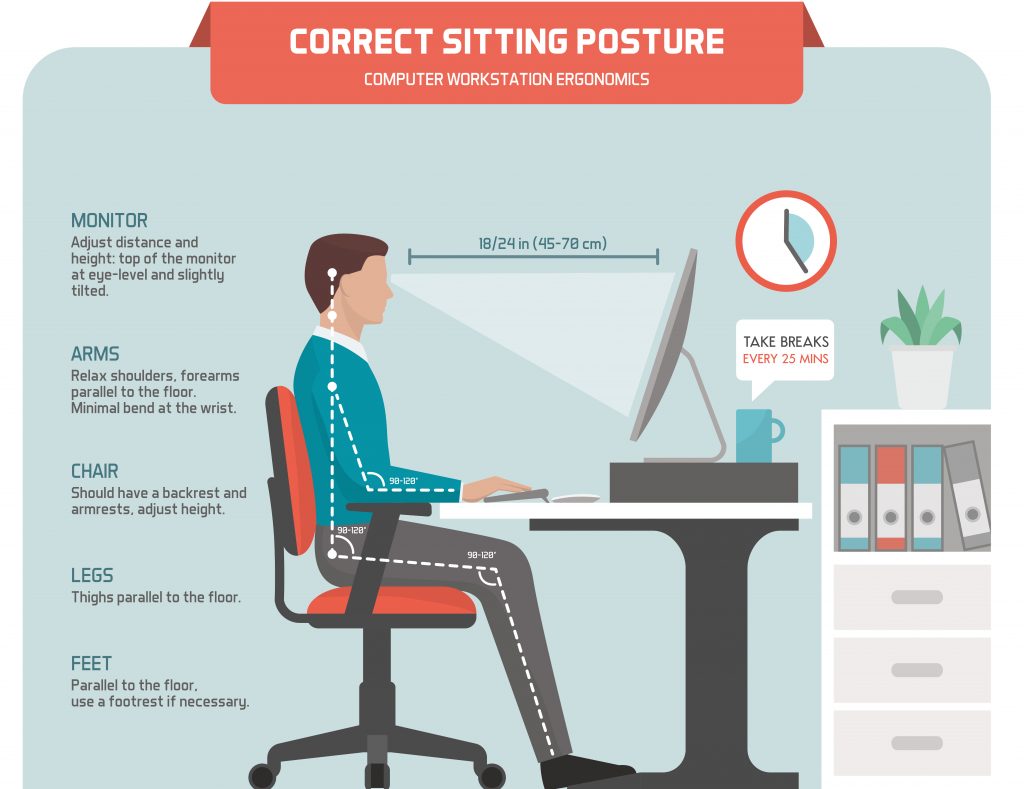
Believe it or not, most of us use an office set-up that is not conducive to optimal spine health. Some of the changes to reduce lower back pain at work starts with replacing and rearranging a few items at and around our desks.
Ergonomic chair
Ideally, you would want your back supported and your chair reclined between 100-110 degrees.
If can’t comfortably get your entire back supported, invest in a small cushion or padding that can be placed behind your lower spine.
Arm rests
Adjust the height of your arm rests so that your elbows relax at a 90 degree angle and your shoulders are supported in a neutral position.
If your current chair cannot be adapted to promote a better posture, consider researching and purchasing an ergonomic chair.
If you have questions about what type of chair will best suit you, consult with your doctor or a spine specialist.
The keyboard

Your keyboard placement will often determine how your posture will migrate throughout the day. Make sure that you pull in to your desk close.
Your elbows should never be placed at an angle smaller than 100 degrees. Make sure that the mouse is set up in a similar manner as the keyboard.
Your wrists should be neutral and not extended as seen in most keyboard set-ups.
Office workers may need to consider investing in a height-adjustable desk, mobile keyboard tray, or a wrist pad.
The monitor

The computer monitor or other screen options need to be placed accordingly in order to prevent slouching.
Prop the screen up on a platform or invest in a height-adjustable table-top. Place the screen within reasonable distance for your vision.
Standing desks
If you think that a standard sitting desk won’t be enough to better your posture, look into the option of a standing desk.
A reputable standing desk comes with all sorts of ergonomic tricks to better place your table-top items but also forces you to stand throughout your work day.
Posture
New office gadgets and layouts will only reduce lower back pain if you are also making efforts to correct your overall posture. Yes, ergonomic office supplies encourage better positioning, but without good habits it’s very easy to use even the most expensive products wrong.
How to sit in a chair
Make sure that your sitting posture is following the 90-90-90 rule (head and neck at 90 degrees, hips at 90 degrees, and knees at 90 degrees).
You want both feet flat on the floor and your hips relatively far back into the chair.
Avoid crossing your legs and sit yourself as far back in the chair as you can. Make use of the back support.
Keep the keyboard, phones, laptops, and other mobile screens out of your lap and on the desk where they belong.
Focus on keeping your neck and chin in a neutral, 90 degree position and relax your shoulders.
Stretching
It cannot be stated enough: find a few minutes throughout the day to stand up and stretch! Note that it barely counts to stretch while still seated in your chair because it only mildly changes your circulation.
Give some attention to the joints throughout your spine, hips, shoulders, neck, and legs.
Regular standing breaks
Lastly, despite whatever ergonomic efforts you make to change your workspace for the better, you still have to move. Avoid sitting for several hours straight, no matter the temptation.
Incorporate times for stretching and even simply standing for a few minutes every hour. Remember, the goal is to stand for at least 2 hours for every 8-hour sitting period.
Contrary to popular belief, prolonged sitting is not relaxing or restful. Without appropriate posture techniques and periodic movement, lengthy periods of sitting can be very detrimental to your spine and to your overall health.
Lower back pain as a result of working a desk job can sneak up on you and severely limit your abilities.
Make the changes now in order to avoid the escalating spinal pain and to comfortably go about your life.


